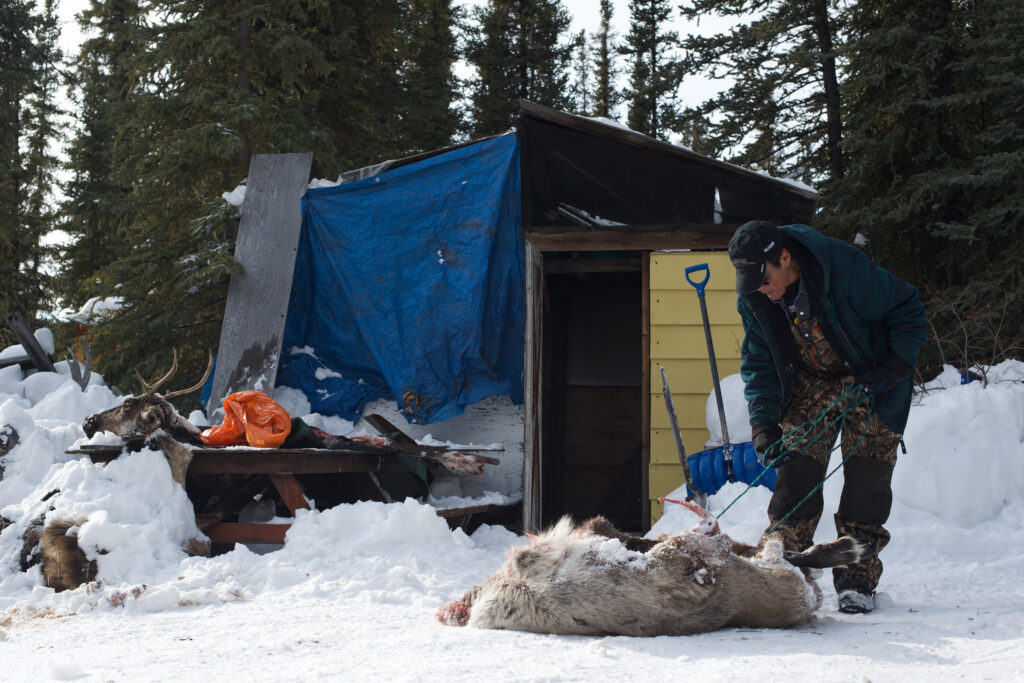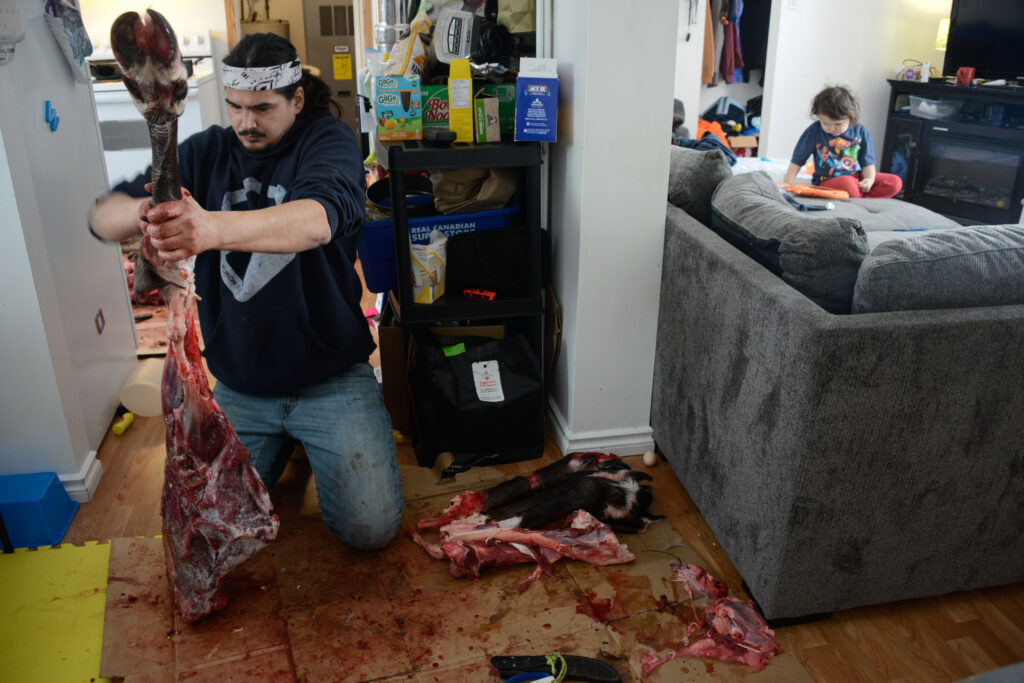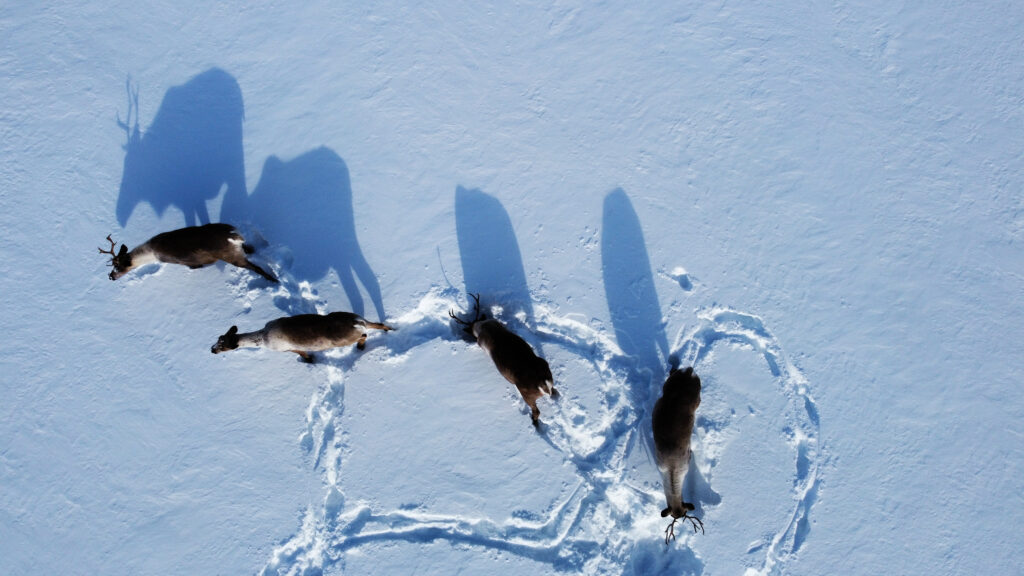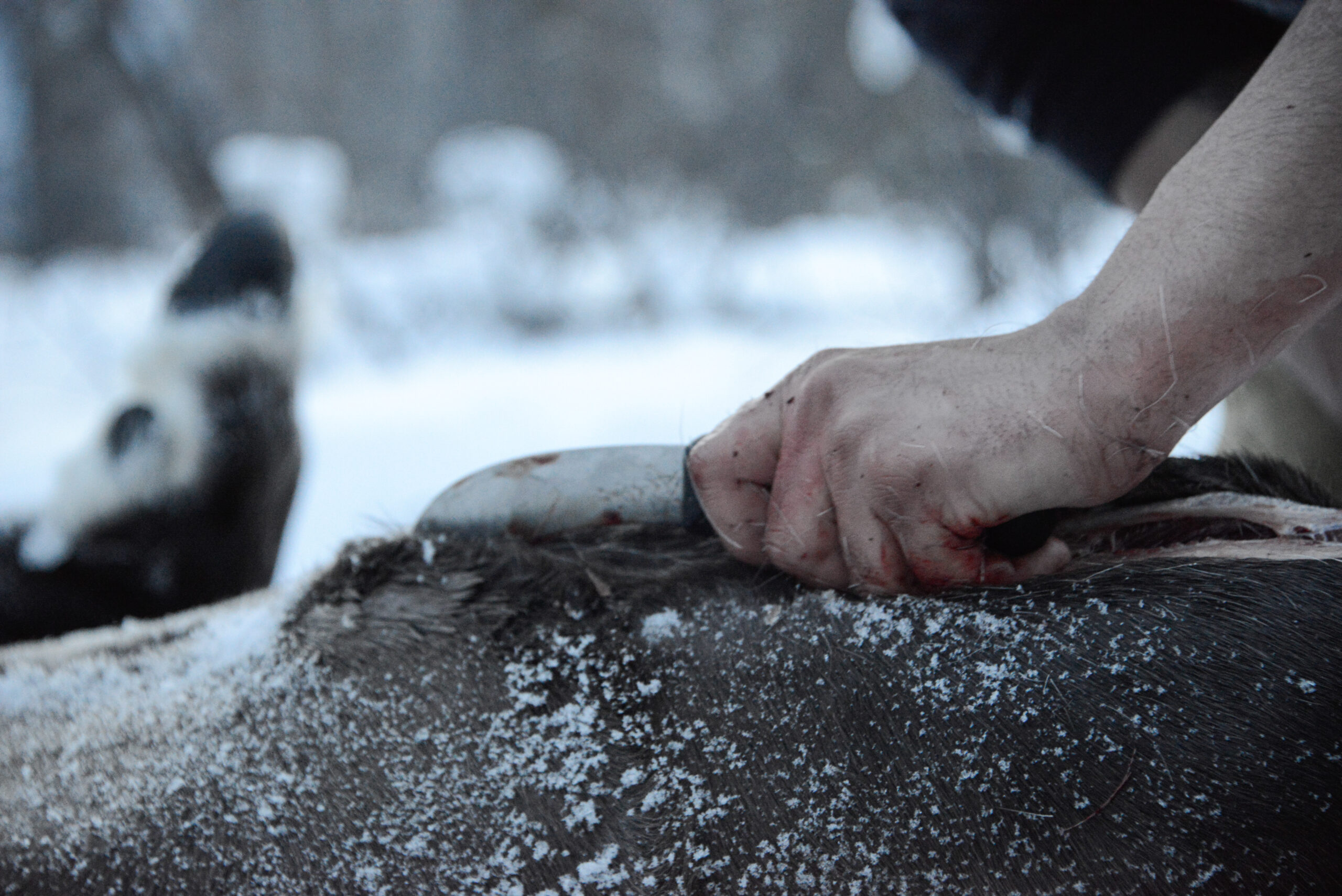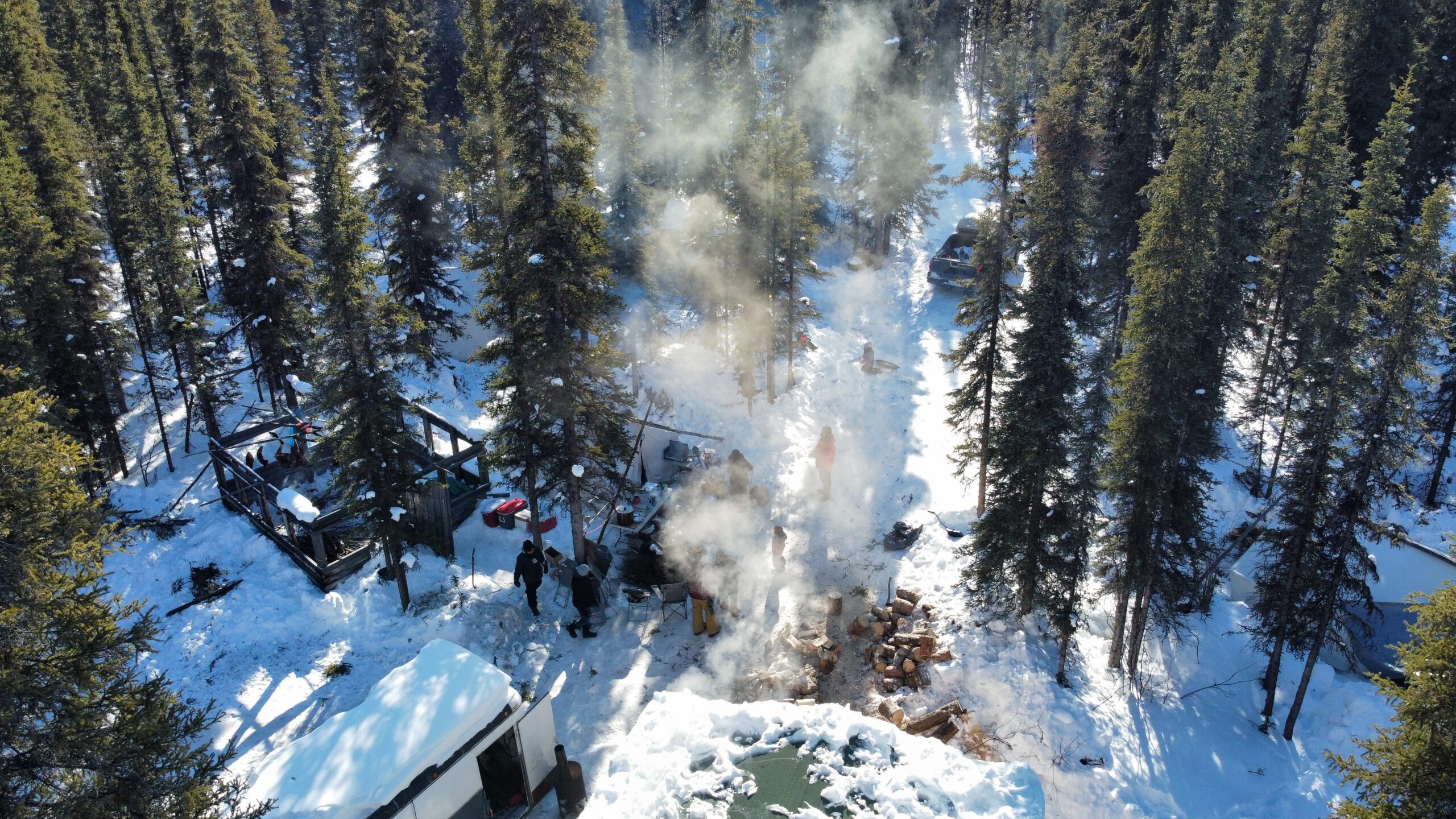
What it takes to dig up the dirt in Alberta
Accessing government records in Alberta is tougher than ever. If you want to find how...
This photo essay is part of The Narwhal’s BIPOC Photojournalism Fellowship, operated in partnership with Room Up Front and made possible by The Reader’s Digest Foundation and the generosity of The Narwhal’s readers.
It’s early March and the sun is high as John Acklack drives his truck through the snow on a small road just off of southern Yukon’s Robert Campbell Highway. I’m accompanying Acklack, a Dena Elder from Ross River, as he travels to his old cabin, where youth and Elders of Tu Łidlini are already gathered to talk about one of the central cores to all of the Kaska Dena’s way of life: caribou.
As we drive, Acklack recalls traveling all over the countryside to set fishnets, hunt caribou on snowshoes and take in the stories of the Elders who came before him.
When we arrived at his cabin, which sits not far from Ługanjoji (Finlayson lake), we see members from Ross River sitting around the campfire, youth setting up tents for the Elders. The warmth of community is palpable, as a gathering of that kind has been much needed since the beginning of the pandemic. Acklack’s cabin is a treasured place for many people from the Kaska Nation, comprised of five Dene-speaking First Nations spanning the Yukon and British Columbia border.
Since time immemorial the Kaska Dena has relied on caribou for sustenance. Our Elders say the Finlayson herd is disappearing. Population studies conducted by the Yukon government have charted the herd’s decline for several decades.
“We don’t see caribou up here anymore,” Acklack tells me. “We used to see caribou all over the place, tracks all over the road. Now, nothing.”
Over the last five to 10 years the Kaska have been witnessing big changes on the land, with the animals and how the area around Kudz Ze Kayah (caribou country) is being used. Most pressing for the caribou is a recent proposal for a major open-pit and underground mine, named for the caribou it now threatens. The Kudz Ze Kayah mine is being planned in the northern Pelly mountains, 115 kilometres south of Ross River, by BMC Minerals, a Vancouver-based company. According to plans submitted to the Yukon Environmental and Socio-Economic Assessment Board, the company hopes to extract 1.8 million tonnes of zinc, 600,000 tonnes of copper and 350,000 tonnes of lead from the Kudz Ze Kayah mine over a 10-year lifespan. The mine would then be subject to a 26-year closure and reclamation process.
The Kaska Dena are worried about the destruction of caribou habitat that comes with the big footprint of the mine and the roads that will be built to service it, all of which are sited in winter caribou habitat. According to the assessment board, the mine would have “significant adverse effects” on water, traditional land use and wildlife. The board also found the project will contribute to the “likely decline” of the Finlayson herd, which is a subsistence resource for the Kaska Nation.
But the mine is just one item on a list of growing threats to the caribou. The places that are important to the Kaska Dena are changing. Because of climate change we see more caribou moving away from their seasonal winter grounds. We don’t see caribou at Ługanjoji anymore.
There are also an increasing number of hunters travelling to Kaska territory to hunt big game. These travellers do not know our traditions and way of life as Dena.
But even as these threats converge on Kaska Dena territory, our people are coming together to manage our lands and resources, not just for now, but for our nations’ future. Around the fire at the Finlayson caribou camp, Elders share knowledge with a new generation of Indigenous guardians who are stewarding the land and the caribou in the midst of the pressures of industrial development, resource extraction and climate change.
A Ross River Dena member Gordon Peter tells me: “Guardian programs are important for the youth, we follow our Dena Laws and show deep respect for the land.”
“We would like to see the caribou herd continue for generations to come.”
The following is a collection of photos showing the Kaska Dena’s connection to the land and to the caribou which have sustained our people since the beginning.



